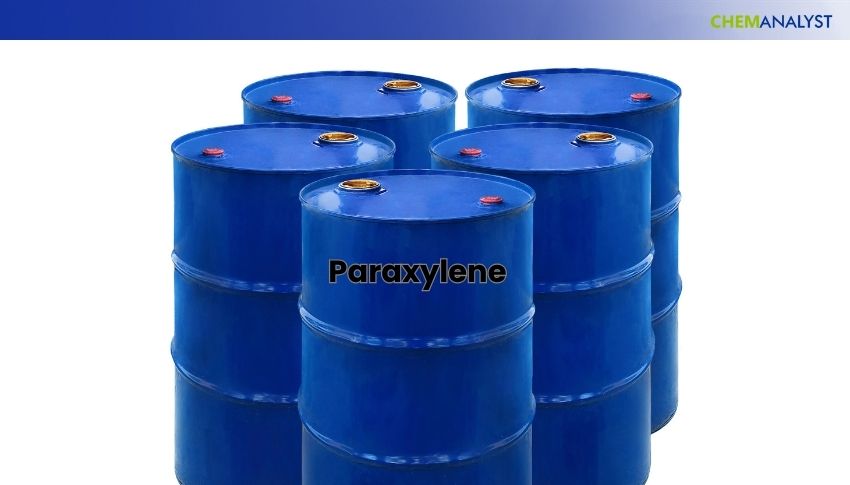Welcome To ChemAnalyst

During the first three weeks of June, U.S. Paraxylene prices were flat as PET and PTA demand held steady, and production was stable despite rising costs for naphtha. On the fourth week of June, prices jumped 4.7% based on a huge 6.3% jump in naphtha due to rising crude prices and additional international demand. Germany saw a similar but slower price trajectory with prices stable in early June and then increasing 2.4% and then 6.0% during the third and fourth weeks, respectively. The German situation had a seasonal PET demand issue but also operational concerns about logistics. There is an expectation for price increases on both domestic and foreign prices.
In the U.S., paraxylene prices varied little throughout June and then increased sharply in the last week of the month. During the first week, paraxylene prices were steady with a slight upward production cost pressure from marginally higher feedstock naphtha costs of 0.8%. The steady domestic demand from PET resin uses, particularly bottles and films, offset the minor decline in PTA buying interest by foreign buyers and kept prices stable. Manufacturing activity was steady, with producers running at normal run rates and ensuring consistent supply for both domestic use and overseas contracts.
In the second and third week, the same price level persisted despite continued higher naphtha values, paraxylene prices held steady, supported by stable output, reliable logistics and offering limited cost-side tension. Paraxylene producers were running at regular average rates, and inventories were adequate. Demand from both PET and PTA segments, domestically and internationally, was steady, creating a balanced supply-demand dynamic that reinforced price stability.
However, in the fourth week a significant turn in the market occurred. Paraxylene prices increased by 4.7%, driven by the rising cost of naphtha which increased 6.3% all fuelled by rising global crude oil prices. Even though domestic demand for paraxylene from PET and PTA consumption was stable, international demand was rising, especially in key importing countries where demand began to ramp up. Exporters, responding to global sentiments tightening, raised onward offer levels to international subsequent buyers, which compelled the paraxylene prices up.
At the same time in Germany, paraxylene had a similar, but slower, trajectory. In the first week, prices remained steady as naphtha costs rose by 0.4% and consequently, production costs increased slightly. Domestic supply remained steady and balanced demand between PET and PTA sectors neutralized any price volatility. PET demand improved seasonally, while PTA demand weakened slightly, but overall market activity was steady due to the balancing effect.
In the second week, we again had market stability in paraxylene, with no changes in costs or demand sustained. In the third week, paraxylene prices moved upward by 2.4% compared to week two, while naphtha costs remained unchanged. Rising crude oil prices impacted paraxylene's production costs indirectly through naphtha and supply/demand factors. PET domestic demand was stronger than PTA. PTA demand dropped off slightly, but not enough to offset the net movement.
In the fourth week, German paraxylene prices rose 6.0%, largely due to logistics worries. Potential rail closures and actions limiting truck movement this summer raised concerns for delays in transportation and precautionary purchasing took place. Feedstock costs were unchanged, but still-good demand from PET and PTA users, combined with logistics impediments, compelled sellers into raising offers since decreased local availability.
Looking ahead, ChemAnalyst expects that prices of paraxylene will increase in the upcoming weeks in the USA on continued strength in crude oil prices, rising naphtha costs, steady worldwide PET demand. while in Germany anticipated logistical disruptions and tightened regional supply may further amplify upward paraxylene pricing momentum.
We use cookies to deliver the best possible experience on our website. To learn more, visit our Privacy Policy. By continuing to use this site or by closing this box, you consent to our use of cookies. More info.
